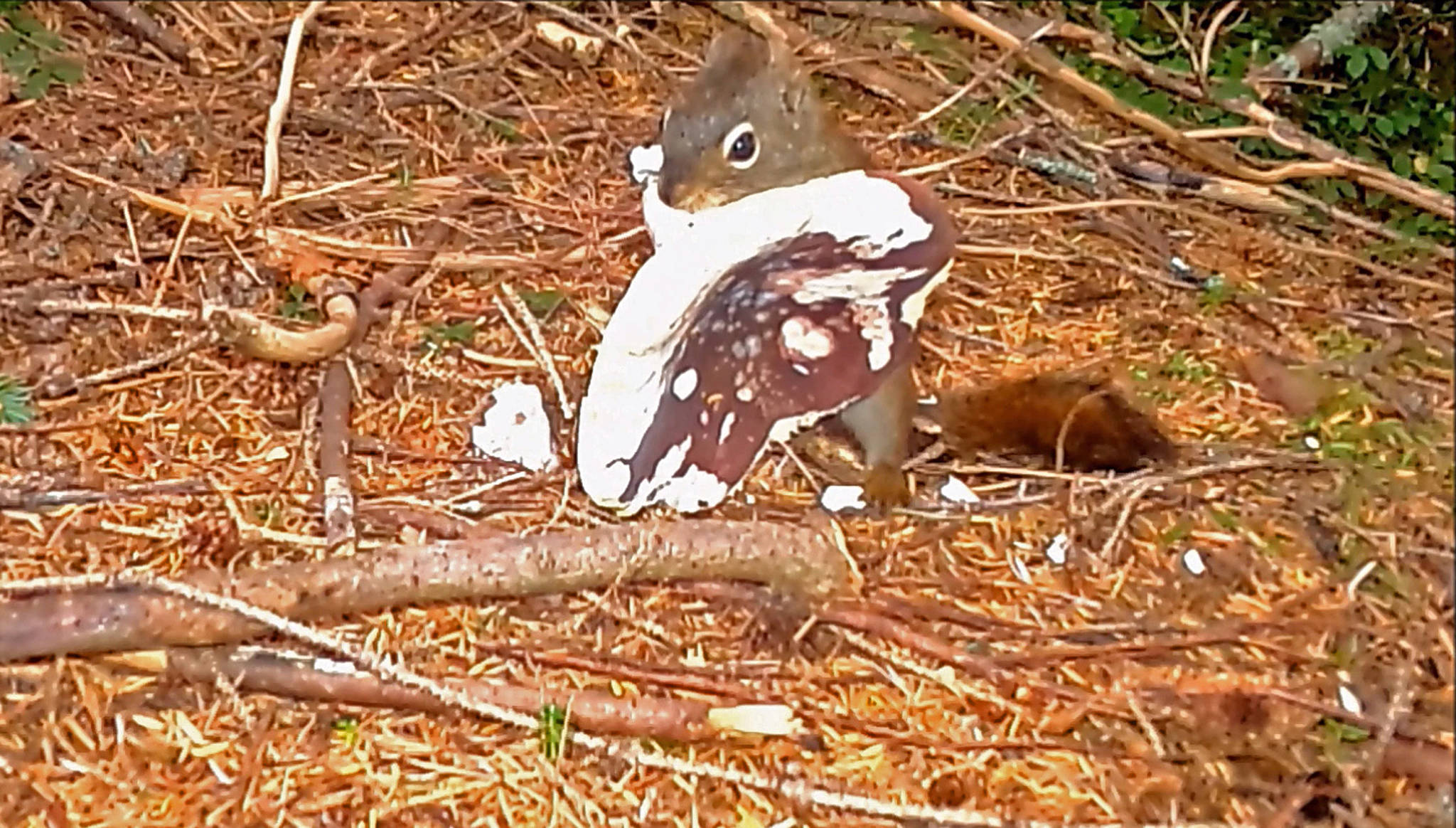Fungi are made up of vegetative parts, which are filamentous structures that typically lie underground, and reproductive parts, which take various forms, sometimes finger-like or shelves, or commonly as mushrooms with a stalk and a cap. But some fungi never produce above-ground parts; the small, round or lumpy reproductive structures are underground — these are known as truffles.
Fungi reproduce by means of spores — each tiny spore containing the makings of a new individual. Most fungi, such as ordinary mushrooms, disperse their spores aerially — releasing the mature spores from the mushroom cap to vagrant breezes in the forest understory. Truffles do it differently: they rely on small mammals to dig them up and eat them, passing the spores through the digestive tract and depositing them in feces.
Here in Southeast, there are two major harvesters of truffles: the red squirrel and the flying squirrel. The red-backed vole also does this and other small mammals may do so occasionally. These rodents also harvest typical mushrooms, sometimes caching them, to be eaten later, after they dry. Red squirrels do this very regularly; flying squirrels in other regions cache many kinds of food but apparently they have not been recorded to do so in Alaska.
The caloric content of fresh mushrooms is low, far lower than that of nuts and seeds. However, dried mushrooms compare more favorably, although they still average only about two-thirds of the caloric content of conifer seeds. Mushrooms are very low in fat, compared to spruce and hemlock seeds, but they can be a pretty good source of carbohydrates and protein, especially when dried. They may also provide an assortment of micronutrients such as vitamins and minerals. Fresh mushrooms can be a source of water during season dry periods.
However, the actual food value of fungi to rodent consumers depends in part on the intake rate. Taking a bite of mushroom or truffle is quick and easy. But when eating conifer seeds, squirrels have to peel back the cone scale and trim the membranous ‘wing’ from each seed before eating it. Although squirrels are remarkably fast at extracting conifer seeds from a cone, it still seems that the food intake rate would be slower than when eating fungi. The actual food value also depends on how efficiently a squirrel’s digestive process extracts energy and nutrients from the material that is ingested. Some studies of squirrel diets suggest that the digestibility of fungal tissue is considerably less than that of conifer seeds. Nevertheless, squirrels regularly eat fungi, so there must be sufficient reward to make it worthwhile.
The relationship between truffles and squirrels (and voles) is mutualistic — the mammals get dinner and the truffles disperse their spores. For truffles, the relationship is obligatory; they are dependent on small mammals for spore dispersal. For the rodents, the relationship is more variable, depending in part on the availability other food sources (for example, squirrels might eat more truffles in years when the cone crop is poor).
Mushroom-producing fungi sometimes get spores dispersed by rodents that harvest mushrooms; the spores ingested are viable after passing through the rodent’s guts, so in addition to the normal, aerial means, the fungi benefit from rodent assistance. This amounts to a casual sort of mutualism in which both parties benefit but the relationship is not obligatory for either one (in contrast to that for truffles).
Now the plot thickens! Many fungi, both truffles and mushrooms, are mycorrhizal — forming mutualistic relationships with the roots of various plants. The plants provide carbohydrates to the growing fungi and the fungi supply various nutrients to the plants. In most cases, both participants in the relationship grow better with the partner than they do alone; in some cases the relationship is obligatory to at least one of the partners.
Thus, in this network of interactions, one well-developed mutualism (the fungus-plant relationship) intersects with another one (the rodent-fungus relationship). Something for everybody! A nicely tangled web!
• Mary F. Willson is a retired professor of ecology. Her essays can be found online at www.onthetrailsjuneau.wordpress.com

